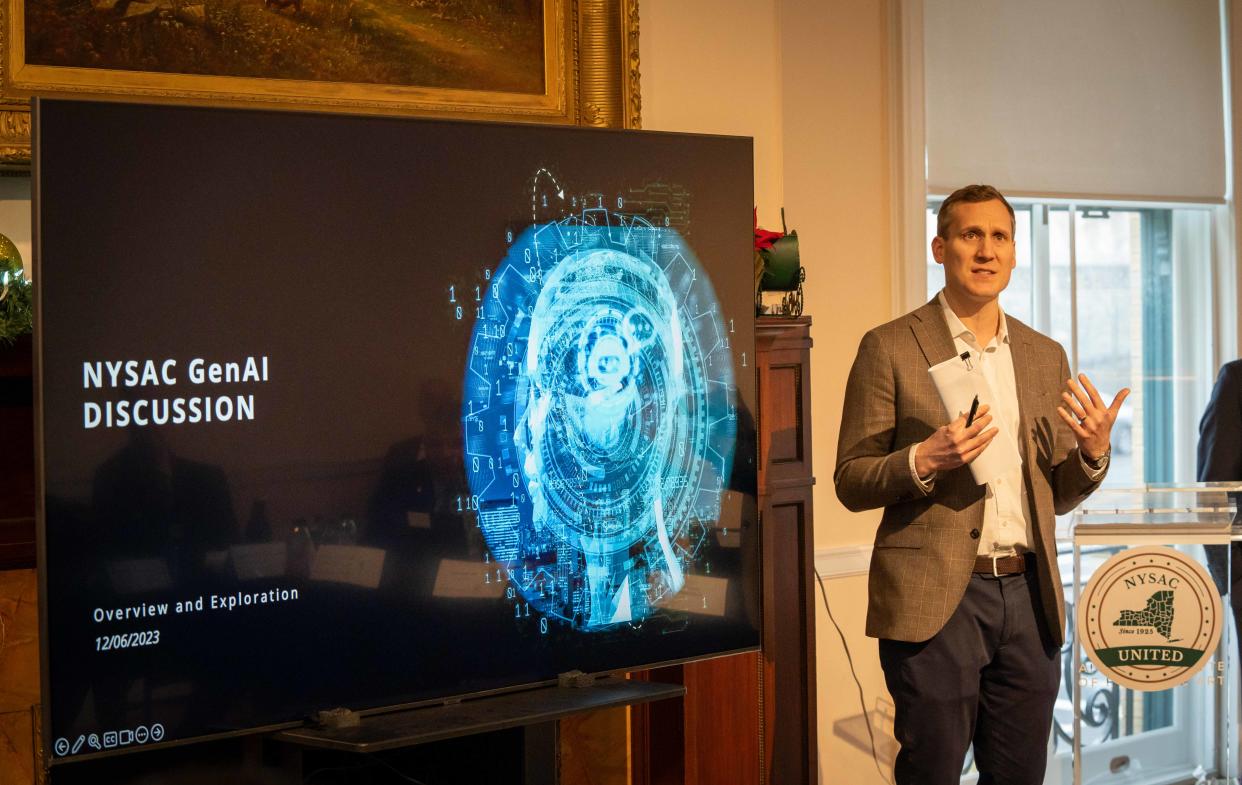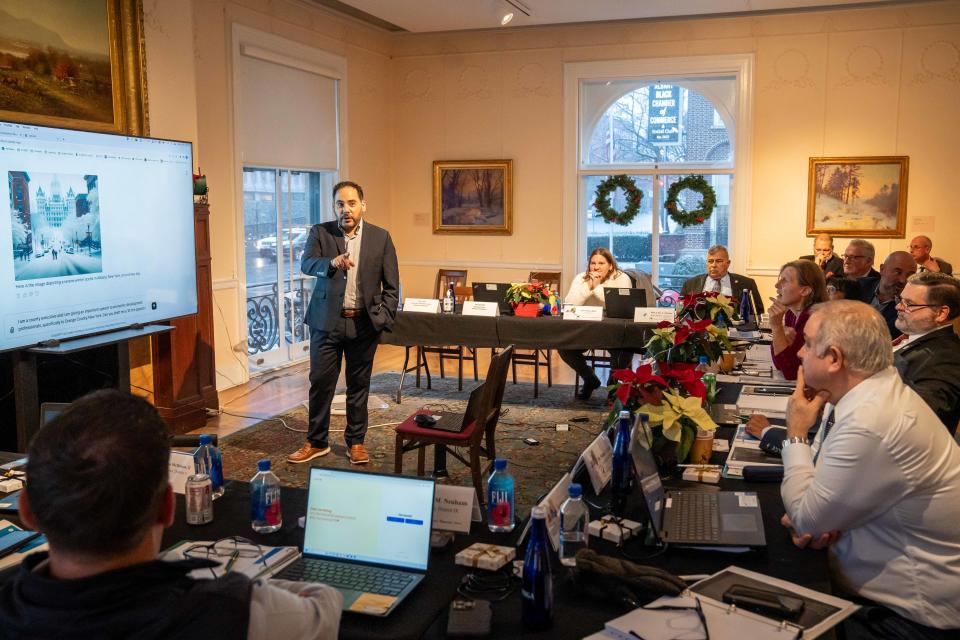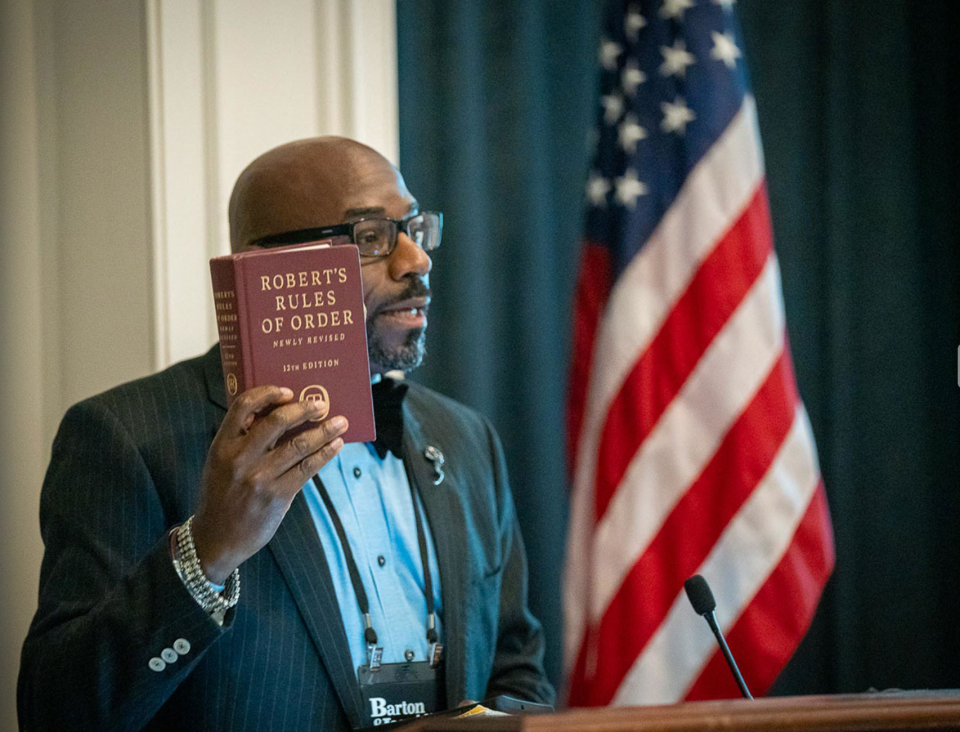2024 forecast: use of AI in local government

The New York State Association of Counties' (NYSAC) winter meeting debriefed the potential impact that artificial intelligence (AI) might have on county governments.
Members discussed ways in which AI could improve local services as well as the potential risks and guardrails required.
NYSAC Executive Director Stephen Acquario noted that moving forward AI will be used in every area of society, but it still must be used as a tool humans can control – not the other way around.
While some sort of regulation is needed, opinions vary on the breadth and enforceability of such guardrails.
Government officials have offered a glimpse into the role AI may play in the near future.
NYSAC

For the potential and risks of AI to be fully realized technology companies cannot go it alone. There should be genuine partnerships with other sectors, such as universities and government, NYSAC representatives said.
“This technology is here and we as county leaders need to be prepared to leverage its potential and mitigate the risks associated with it,” said NYSAC President Daniel P. McCoy. “The potential for AI tools to provide game-changing insights in areas like budgeting and disaster response could revolutionize how we serve our communities.”
Some counties across the nation are already using AI for tasks such as reviewing digital aerial imagery from planes and drones and identifying features requiring inventory, validation, field inspection, and disaster recovery. AI technology allows for extracting new and insightful information from these valuable aerial image assets.
The NYSAC Fall Seminar conference featured a keynote presentation on AI from a representative from Palo Alto Networks and a workshop with experts from the National Association of Counties.
This winter meeting continued the discussion, looking at further avenues for deployment of the technology including using advanced chatbots, intuitive phone menu systems, improving search functionality and record keeping, and analyzing large quantities of public information.
Other functions discussed included:
Optimizing emergency response times by predicting the impact of disasters, suggesting evacuation routes, and helping coordinate rescue efforts
Automating the initial screening of job applications to ensure unbiased candidate selection,
Optimizing waste collection schedules, reducing environmental impact, and improving management efficiency
Monitoring energy consumption in public buildings and infrastructure to reduce costs
Automating routine administrative tasks, such as document processing, data entry, and scheduling

In the Mohawk Valley
Any substantive regulation of AI will have to come from Congress. Senate majority leader, Chuck Schumer, Democrat from New York, has promised a comprehensive bill for AI, possibly by next year. So far, state lawmakers have introduced bills that are focused on the production and deployment of A.I.-systems.
Connecticut now requires the state Department of Administrative Services to conduct an inventory of all systems that employ artificial intelligence and ongoing assessments of such systems to deter unlawful discrimination.
Here in New York, Assembly Bill 8129 requires bias audits to assess AI tools' potential impact on sex, race and ethnicity discrimination when it comes to application tracking systems (ATS). In comes the role of local government.
Across the Mohawk Valley generative tools have been widely embraced, according to officials.
“Artificial Intelligence has the potential to significantly improve county services by enhancing efficiency, effectiveness and overall service delivery,” said Oneida County Executive Anthony Picente Jr. “This would allow our employees to focus more on the complex and strategic aspects of providing [for] our residents.”
New Hartford Town Supervisor Paul Miscione also welcomes AI integration.
“Even at the town level AI can be used to assist with storm water issues, highway department tasks and public safety – to increase efficiency by automating routine tasks, freeing up employees' valuable time and resources," Miscione said.

Baby steps
With the nationwide determination that guardrails ought to be required local officials are airing on the side of caution. Picente shared considerations for forming a task force in 2024 to set a formal county policy.
“Implementing requires careful planning, ethical considerations and collaboration with stakeholders,” Picente said. “It’s essential to ensure transparency and data privacy to build trust among our employees and residents.”
Up to this point, the main use of AI in Oneida County government has been in the realm of cybersecurity.
“AI could reduce government cost by streamlining infrastructure maintenance, optimizing transportation, honing public health and maximizing emergency response,” said Picente. “We have been having some internal discussions about how to further incorporate its use and multiple department heads have been consulting with state and national organizations for guidance and best practices.”
In 2024, New Hartford's Public Safety Department will take it's first step, relying on the help of AI to compile data.
“The lack of information, competence, and experience among government personnel is one of the primary obstacles of artificial intelligence in the public sector,” stated Miscione.
This article originally appeared on Observer-Dispatch: Predictions for 2024: use of AI in local government

